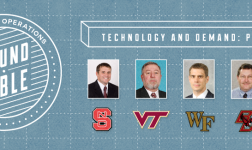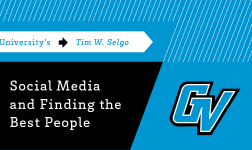Our recent study on coach versus faculty salaries was covered by Inside Higher Education and sparked quite a debate. We decided to use Twitter to go deeper into some of the topics raised by the article in our second #WINterview, this time with the author, Dennis Kramer.
We wanted to get more of his takes on changing the conversation about athletic versus academic spending, and how can ADs use this information to challenge the notion that they’re taking a disproportionate amount of resources. Thanks to Dennis Kramer for participating!

Q1: @DKramerII Why is it important to change the conversation from salary escalation to who is paying for the salaries? #WINterview

@Win_AD Looking at allocation of funds for salaries allows institutional decision makers to examine the trade-offs between the allocation of state funds & student fees to athletic departments, or reintegrate those funds into the general academic fund. #WINterview

Q2: @DKramerII Why is it important to only look at state funds versus outside income? #WINterview

@Win_AD Sponsorship sales, gate revenue, and athletic based donations are based on the performance & existence of the athletic programs. It would be difficult for institution leaders to examine trade-offs that exists when “non-liquid” revenue streams are included within the conversation. #WINterview
@Win_AD Isolating state funds & student fees, institutional leaders get a clear view of financial tradeoffs with funds that could be reallocated to academic mission. #WINterview

Q3: @DKramerII How will this help academic institutions make better decision about athletic versus academic spending? #WINterview

@Win_AD However, the more data we can provide decision-makers the better informed decisions they can make. #WINterview



Q5: @DKramerII How can ADs use this information to challenge the notion that they’re taking a disproportionate amount of resources? #WINterview


Q6: @DKramerII What differences might we see if the study were more longitudinal? #WINterview


Q7: @DKramerII Is there lot of variation between the larger institutions and smaller? #WINterview

@Win_AD Large institutions have the opportunity to engage in economy of scale and have a larger base to generate athletic revenue from; small institutions have to generate much more per capita because the free-market establishes coaches’ salaries. #WINterview

Q8: @DKramerII Would factoring for facilities spending change any of the outcomes? #WINterview

@Win_AD However, since salaries are a major expenditure, the potential trade-offs are easier to see. #WINterview

Q9: @DKramerII What are the next steps in trying to get faculty and coaches’ salaries to start from the same place? #WINterview

@Win_AD Also, further exploring legal standing on institutions on the “hook” for the entire contract rather than just the state funded amount. #WINterview




